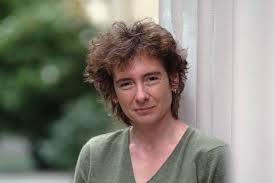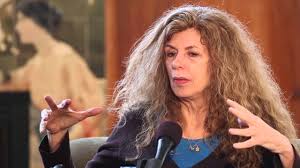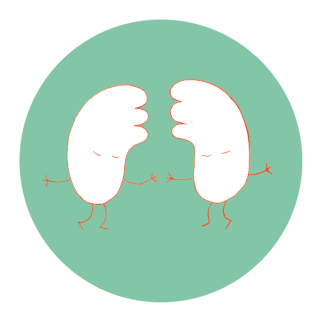I found this video about Dr Karel Lewit, a Jewish-Czech physician who specialized in neurology and became a world authority in myoskeletal medicine, after hearing about him from the myoskeletal therapist Erik Dalton. The video is beautifully shot by Ales Urbanczik, entitled: Touching Feeling Understanding. Dr Lewit practiced what he called a “functional, relational approach” which, of course, includes a client’s way of breathing. Read More
“The truth is most people just need to learn how to breathe”
I found this video about Dr Karel Lewit, a Jewish-Czech physician who specialized in neurology and became a world authority in myoskeletal medicine, after hearing about him from the myoskeletal therapist Erik Dalton. The video is beautifully shot by Ales Urbanczik, entitled: Touching Feeling Understanding. Dr Lewit practiced what he called a “functional, relational approach” which, of course, includes a client’s way of breathing. Read More
I want to tell the story again
Much has been written on the beginning of life and the oxygen revolution but possibly never as vibrantly as in Jeanette Winterson‘s Weight: The Myth of Atlas and Heracles. This is the opening chapter:
“I want to tell the story again
The free man never thinks of escape.
In the beginning there was nothing. Not even space and time. You could have thrown the universe at me and I would have caught it in one hand. There was no universe. It was easy to beat.
This happy nothing ended fifteen aeons ago. It was a strange time, and what I know is told to me in radioactive whispers; that‘s all there is left of one great shout into the silence. Read More
I am closer to you than your own breath
I would like to share a poem by Marie Howe called „Prayer“.
In a nutshell, it‘s about intimacy, about relation-ship. In the poem, Marie Howe finds words for the breathlessness, the relentless restlessness that stems from a deep fear of connecting to oneself and others.
I discovered the poem by chance online and after reading it a couple of times I realised I didn‘t understand it. So I read it out to several friends and was lucky to have an exchange with Almuth who helped me find my way into the poem. In retrospect I‘m baffled what I didn‘t understand, a bit like with riding a bicycle. Marie Howe also had „help“ with writing her poem „Prayer“, she was inspired by the 12th century mystic Ibn Arabi. So thanks to him, to Almuth, and to Marie Howe, always.
I‘ve included Ibn Arabi‘s poem and my conversation with Almuth in the post.
—————— Read More
Breath Token March 2019
A breath token is a breathing exploration that I develop for friends & clients and send out as a gift.
Rolling the back of the head
Breathing is often employed for relaxation. I use the verb „employ“ because we use our will in telling our breathing what to do. This is not only unnecessary but also interferes with the natural breath rhythm. The nature of breathing is reactive and adaptive. Gentle stroking, or rolling movements, for example, can bring about relaxation more efficiently, letting breathing do what it does best: react and adapt. Read More
Breathing… our most dysfunctional movement pattern
The renowned myoskeletal therapist Erik Dalton gives an overview of breathing anatomy, assessment and treatment strategies and explains why “Breathing is our most dysfunctional movement pattern“, quoting neurologist Dr. Karel Lewitt on respiration. For the cited images and videos in the article please visit the article directly.
“The famed Czech researcher Dr. Karel Lewit states: “Respiration is our primary and most important movement pattern… and also the most dysfunctional.” Most clinicians are aware of how breathing affects posture, alignment and bodily functions, but there is much confusion when it comes to treating underlying joint and myofascial disorders. This article presents an overview of breathing anatomy, assessment and treatment strategies to help clients breathe in a more functional and authentic way. Read More
Breath sweeps mind
Breath sweeps mind is the title of a series of talks on meditation by Zen master Jakusho Kwong-roshi. In the first talk he explains how he came to this title:
„Over twenty years ago…I drew my first Ensō. An Ensō is – you‘ve seen them before -one of these Zen circles…dipping the brush into the ink and feeling its texture, the thickness and thinness of the ink and as soon as you lift the brush off the ink pad, painting in the air with the tip of your brush and letting it rest on the rice paper and swiftly holding the point straight and making the circle. And after I finished it I decided to put these words inside the circle Breath sweeps mind. Unkowingly – my hand knew it and the brush knew it – but I didn‘t know what the meaning of that was exactly until over these many years I‘ve come to know it more thoroughly.“ Read More
The pause
I recently got to know the humanist and existentialist psychologist Rollo May (1909 – 1994) in a post by Brain Pickings. Rollo May was especially interested in the themes of freedom, courage and creativity. “Freedom”, he said, “is the capacity to pause in the face of stimuli from many directions at once and, in this pause, to throw one’s weight toward this response rather than that one. The person becomes able to say, “I can” or “I will”.”
The pause also plays a major part in breathing. It’s one of the three breath phases: inhale – exhale – pause. The pause occurs naturally, at rest, when air has left the body with an exhale and before air comes back into the body with an inhale. Read More
Breath Token February 2019
A breath token is a breathing exploration that I develop for friends & clients and send out as a gift.
Lifting and lowering the arm with breathing
Yesterday I was with a group of women explaining the term „somatic“ and it sounded rather dry and a bit boring to me. This is actually not so surprising because somatics is about an experiential relation-ship with the body: we communicate with the body or let the body speak for itself, rather than us talking about it. And when we use words, we describe what‘s happening and what something feels like rather than lecturing. Read More
“The secret to turtle hibernation: Butt-breathing”
Butt-breathing. Really? Definitely. Jacqueline Litzgus, Professor at the Department of Biology of Laurentian University discovered that turtle hibernate by butt-breathing. The article “The secret to turtle hibernation: Butt-breathing” about her findings appeared in the online magazine The Conversation in 2017:








